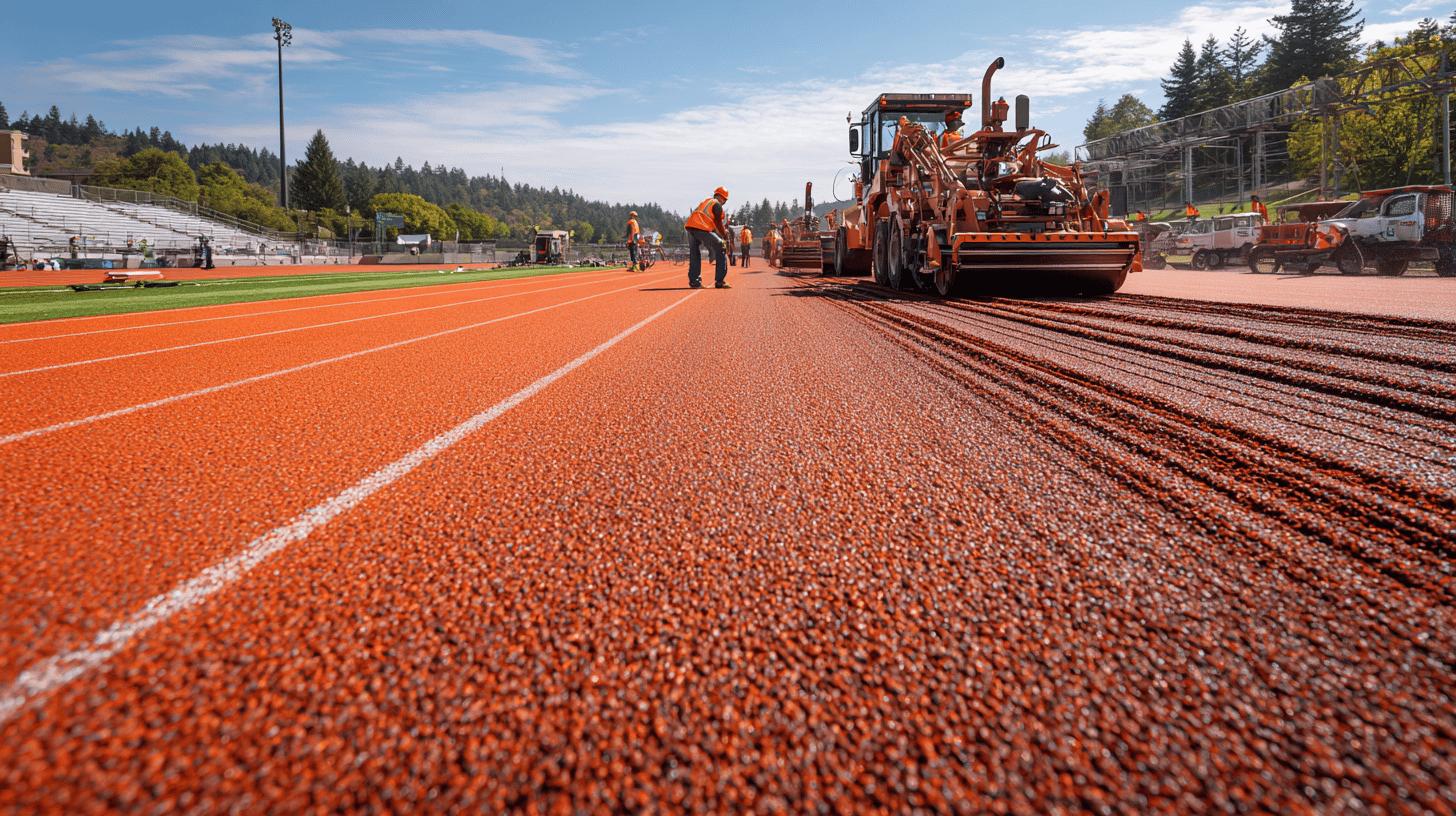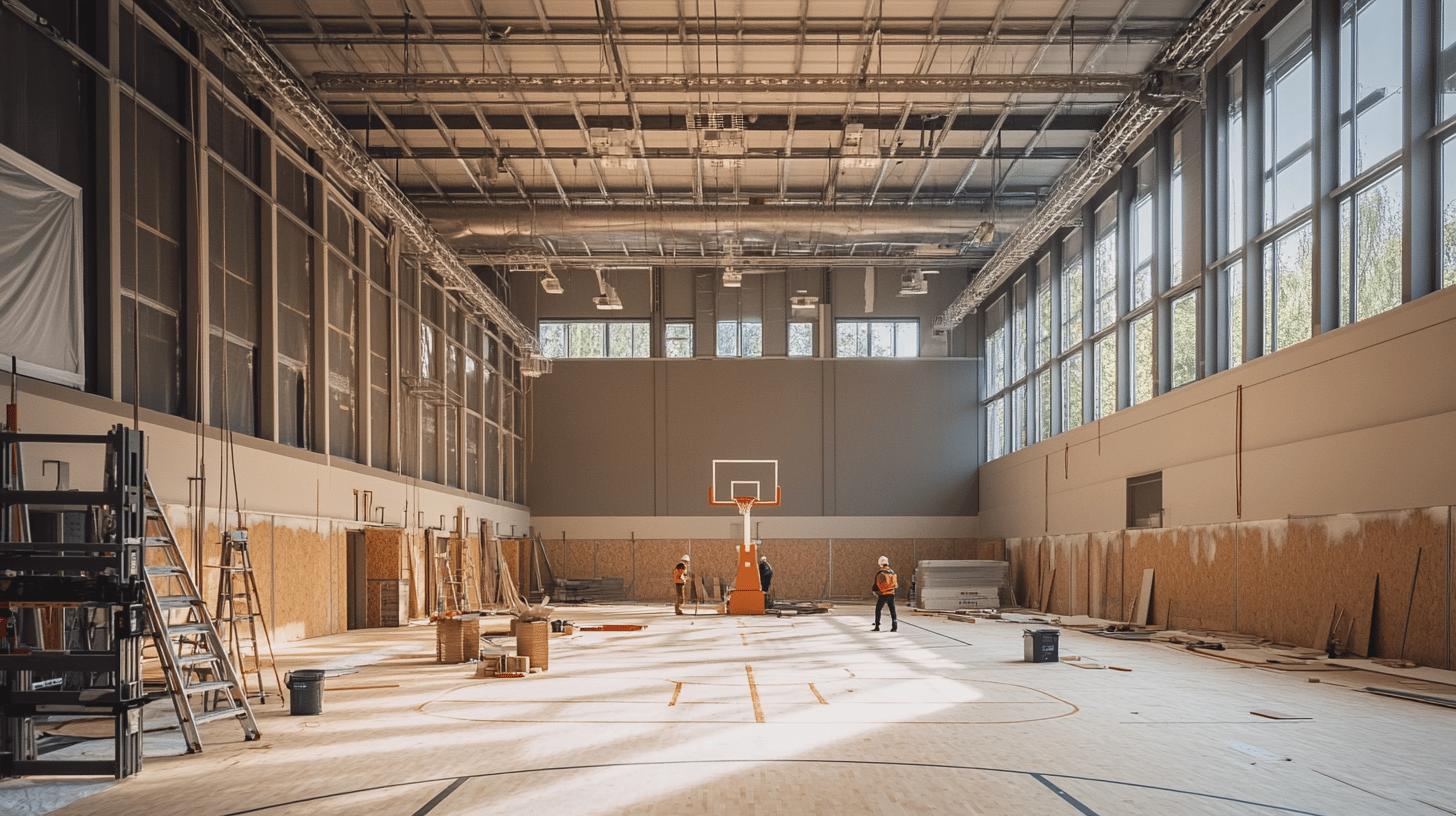Are you still relying on outdated methods for maintaining your rubberised running tracks, knowing they may cost more and require complete facility closures? What if you could enhance track performance and appearance with minimal downtime and expense? Enter Re-Top Systems. These cutting-edge solutions revolutionise track refinishing by applying a new layer of rubberised material over the existing surface. Not only do they extend the lifespan of your tracks, but they also allow customisation and aesthetic improvements. Dive into the world of Re-Top Systems and discover a cost-effective way to maintain your facility’s standard.
Understanding Re-Top Systems for Rubberised Running Tracks
Re-top systems are a sophisticated approach to refinishing rubberised running tracks, offering a cost-effective alternative to full track replacement. These systems focus on restoring and extending the lifespan of existing track surfaces by employing a methodical process of cleaning, repairing, and applying a new layer of rubberised material. This method not only enhances the track’s performance and aesthetics but also significantly cuts down on the time and expense typically associated with complete track overhauls. Re-top systems allow for a degree of customisation, enabling facility managers to choose track colours and markings that align with their specific needs.
Key benefits of re-top systems include:
-
- Cost savings compared to full replacement
- Reduced downtime during installation
- Enhanced track performance and safety
- Customisation of colours and markings
- Prolonged lifespan of existing track surfaces
.
By improving both the durability and visual appeal of running tracks, re-top systems address the wear-and-tear challenges posed by regular use and environmental conditions. The application of a new rubberised layer ensures that the track maintains optimal grip and shock absorption, which are vital for athlete safety and performance. Moreover, the aesthetic improvements from re-top systems can rejuvenate a facility’s appearance, making it more inviting for users. Overall, these systems offer a comprehensive solution for maintaining high standards in running track quality and functionality.
Step-by-Step Guide to Refinishing Rubberised Running Tracks
Proper refinishing of rubberised running tracks is essential to maintain their performance and aesthetic appeal. This process not only extends the lifespan of the track but also ensures optimal safety and functionality for users. The refinishing process involves several critical steps, each designed to address specific issues such as surface damage and material degradation.
Cleaning and Repairing the Surface
The first step in refinishing involves thoroughly cleaning the track surface. Why is cleaning necessary? Precision answer: Cleaning removes dirt, debris, and any existing contaminants that could affect adhesion. This is accomplished using tools such as scrapers and pressure washers.
Once the surface is clean, the focus shifts to repairing any damages. Cracks or low spots are common issues that need addressing. A utility knife is used to widen small cracks, and a suitable filler material is applied to ensure a smooth and even surface. These repairs are crucial as they prevent further deterioration and provide a solid foundation for the new layer.
Application of New Rubberised Material
Following surface preparation, a new layer of rubberised material is applied. What does this layer do? Precision answer: It restores the track’s performance characteristics and visual appeal. The application process involves spreading the material evenly using specialised equipment, such as trowels or sprayers, to achieve a uniform thickness.
Techniques vary depending on the specific product used, but the goal is always to ensure seamless integration with the existing surface. This step is vital for maintaining the track’s grip and shock absorption properties.
Curing and Final Touches
Curing is the next critical phase, requiring the track to be left undisturbed for a specified period. Why is curing important? Precision answer: Proper curing ensures the new material bonds correctly, enhancing durability and performance.
During this time, the material sets and gains the necessary strength to withstand athletic use. After curing, a final inspection is conducted to ensure all aspects of the refinishing process meet the required standards. Any necessary adjustments or additional markings are applied at this stage, completing the refinishing process.
Safety considerations are paramount throughout the refinishing process. Protective gear should be worn to prevent exposure to potentially hazardous materials, and all equipment must be handled with care to avoid accidents. Following these guidelines ensures a successful refinishing project that revitalises the track for continued use.
Advantages and Cost Considerations of Re-Top Systems

Re-top systems present a financially savvy solution for maintaining rubberised running tracks. What are the cost benefits of re-top systems? Precision answer: They offer significant savings over complete track replacement. The costs associated with re-top systems vary depending on factors such as track size and material choice. However, they consistently prove to be more economical. By opting for re-top systems, facilities can avoid the hefty expenses tied to full replacements, as the process involves refurbishing the existing surface rather than constructing anew. This method also minimises downtime, allowing for quicker project completion and less disruption to track availability.
How do re-top systems enhance track longevity and performance? Precision answer: By extending track life and improving aesthetics. The application of a new rubberised layer not only rejuvenates the track’s appearance but also reinforces its durability. Materials such as polyurethane, known for their robust performance, are often used to provide both resilience and cost-effectiveness. The enhanced performance characteristics, including improved grip and shock absorption, contribute to better athlete safety and satisfaction. Ultimately, re-top systems offer a comprehensive upgrade to track facilities, balancing improved functionality with financial prudence.
| Aspect | Cost/Benefit |
|---|---|
| Re-Top Systems | Lower costs, reduced downtime, improved durability |
| Complete Replacement | Higher costs, longer downtime, entirely new surface |
| Other Methods | Varied costs, potential for moderate disruption, partial improvements |
Material Options and Environmental Impact of Track Refinishing
When considering refinishing rubberised running tracks, selecting the appropriate material is crucial for both performance and environmental impact. Two primary options for re-top systems are polyurethane and latex. Polyurethane is renowned for its exceptional longevity and robust performance, making it a preferred choice for facilities prioritising durability. In contrast, latex offers a potentially more environmentally friendly option, appealing to those aiming to reduce their ecological footprint.
- Polyurethane Properties:
- High durability and longevity
- Superior performance in terms of grip and shock absorption
- Latex Properties:
- More environmentally friendly
- Lower cost compared to polyurethane
.
Environmental considerations play a significant role in material selection. Utilising eco-friendly materials like latex can mitigate negative environmental impacts. Additionally, opting for sustainable practices in installation and maintenance further enhances the ecological benefits of track refinishing. By carefully evaluating material characteristics and environmental impacts, facilities can make informed decisions that balance performance requirements with ecological responsibility.
Case Studies and Comparisons with Alternative Methods
Case studies serve as invaluable resources for illustrating the practical benefits and outcomes of re-top systems in the realm of athletic track resurfacing. These documented projects often highlight the significant extension of track lifespan achieved through re-top systems. What makes re-top systems stand out? Precision answer: Their ability to offer a sustainable and less disruptive alternative to complete track resurfacing or replacement. By focusing on refurbishing the existing surface, re-top systems minimise the environmental impact and reduce downtime, ensuring that facilities remain operational with minimal interruption.
A notable example of re-top systems in action is the refurbishment of a high school athletic track in the UK. This project involved cleaning, repairing, and applying a new rubberised layer using a re-top system. What were the results? Precision answer: The track’s lifespan was extended by over five years, and its performance characteristics were significantly enhanced. The project demonstrated that re-top systems not only restore the visual appeal of worn tracks but also improve grip and shock absorption, contributing to athlete safety and performance. This successful case underscores the efficacy of re-top systems in delivering long-lasting, high-quality results.
- Comparison of Re-Top Systems with Alternative Methods:
- Re-Top Systems: Lower costs, less disruption, environmentally sustainable
- Complete Resurfacing: Higher costs, substantial downtime, new materials required
- Other Methods: Varied effectiveness, potential for moderate disruption, partial improvements
.
In summary, re-top systems offer distinct advantages over other refinishing methods. What are these advantages? Precision answer: Cost-effectiveness, reduced downtime, and environmental sustainability. By integrating seamlessly with existing track surfaces, re-top systems provide a holistic solution that enhances both functionality and aesthetics. Facilities opting for re-top systems can achieve substantial savings and maintain high operational standards, setting a benchmark for future resurfacing innovations.
Final Words
Refinishing rubberised running tracks using re-top systems offers an economical and efficient solution for restoring track surfaces.
These systems involve cleaning, repairing, and applying a fresh layer of rubberised material to enhance performance and aesthetics.
Their benefits include cost savings, reduced downtime, and customisation options.
By understanding and employing this technique, one can significantly extend the track’s lifespan.
Re-top systems not only improve durability but also maintain a track’s visual appeal, ensuring an optimal sports experience.
Embracing such innovations ensures the longevity and functionality of athletic facilities.
Re-top your track → International Sports Flooring
FAQ
Track Resurfacing Companies Near Me
Finding local track resurfacing companies can be done through online directories and sports flooring organisations. Consulting industry-specific websites ensures contact with reputable providers experienced in track resurfacing projects.
Running Track Repair Kit
Running track repair kits offer solutions for minor damages by providing materials for patching and sealing. These kits can be sourced from sports flooring suppliers and are suitable for temporary repairs.
Running Track Construction Specifications
Specifications for building a running track depend on the intended use. Essential factors include surface material, foundation preparation, and drainage. Consult industry standards for detailed guidance on regulatory compliance and design.
Track Resurfacing Cost
Track resurfacing costs vary based on the required surface type and track size. Re-top systems offer affordable alternatives to full replacements, significantly reducing expenses while enhancing durability.
Running Track Repair Companies
Engaging professional track repair companies ensures high-quality restoration using advanced techniques and materials, extending track longevity and performance. Industry professionals can evaluate damage and propose suitable refurbishment options.
How Much Does a 400m Track Cost UK?
The cost of constructing a 400m track in the UK depends on material selection and site conditions. Using cost-effective solutions like re-top systems or standard materials can influence overall pricing significantly.
How to Mark Out a 400m Running Track
Marking a 400m running track requires precise measurements and adherence to athletic standards. Employing professional surveyors and utilising accurate measuring tools ensures consistent and correct marking layouts.
How to Build a Running Track in Your Backyard
Constructing a backyard running track involves choosing appropriate materials, site preparation, and ensuring proper drainage. Industry guidelines offer insights into dimensions and layout considerations for personal tracks.
How Long Does a Rubberised Track Last?
A rubberised track can typically last 10-15 years depending on use and maintenance. Regular inspections and timely repairs play a crucial role in maximising track lifespan and performance.
How to Redo a Running Track?
Redoing a running track involves a series of steps: cleaning the surface, repairing damages, applying a new rubberised layer, and ensuring proper curing. Professional assistance is recommended for comprehensive refinishing.
What is the Best Surface for a Running Track?
Polyurethane is widely regarded as the best surface for running tracks due to its durability, performance, and cost-effectiveness. Alternatives, like latex, offer environmentally friendly options.
How Much Does a Polyurethane Track Cost?
The cost of polyurethane tracks can vary, influenced by track size and surface complexity. Despite higher initial costs, polyurethane offers longevity and superior performance benefits that justify the investment.


